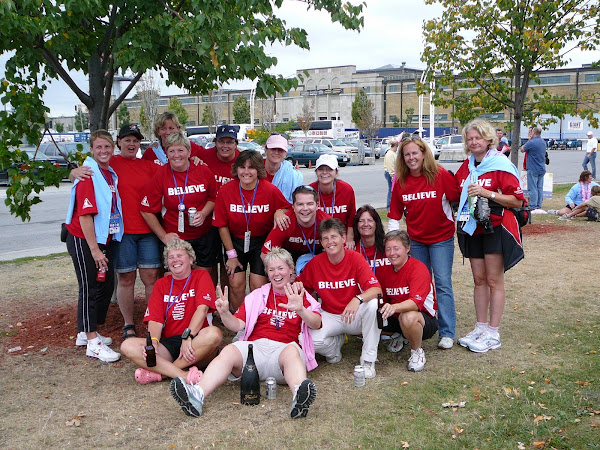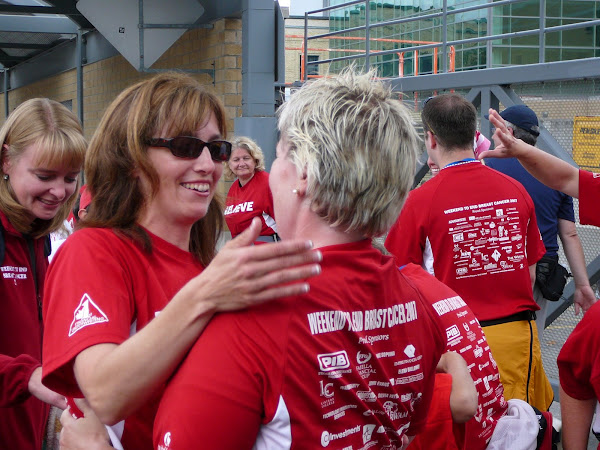Hello everyone,
Montreal...everyone who goes there has fun. Trust me...we were no exception. It oozes culture, history and a European flare. Also home to some hockey team that has had some success in the past...Habs? Yeah, I think that is the name of their team. It is a unique part of Canada with a long history.
The population today is approximately 1.8 million people and Quebec is the largest province in Canada. It has the largest french speaking territory in the world. Montreal's historic beginnings were in part because of the St. Lawrence Seaway and along with the Great Lakes System these waterways cover over 3700 km. The seaway itself is 553 km and goes from Montreal to Lake Erie. This whole system has over 245,750 km of navigable water. In 1895, the United States and Canadian government formed the Deep Waterway Commission and 50 years later construction began. Politics, red tape and the discovery of new rock formations that required new machinery to be built were part of the delays. When they finally did begin construction the system was built in four years.
Montreal was founded in 1534 and is one of the oldest cities in North America. The area is a history of Indian wars and alliances and was one of the first posts for the fur trade on Mont Royal. Mont Royal is thought to be how the name "Montreal" came about. It was Jacques Cartier who first met with the Iroquois in 1534 but it was Samuel de Champlain who landed in 1603 and came back in 1611 and some of his crew stayed. In 1641, 50 French settlers were recruited in France by Jerome Le Royer de la Dauversiere of Anjou on behalf of the Societie de Notre-Dame to come over to the new land to set up a new Catholic community and convert the natives to Catholicism. However, the wars with the Iroquois were tough but eventually this community called Ville-Marie would become Montreal. As this colony grew it resembled the french towns of France with its fortified stone walls in the town and farms.
In 1685 this community was home to 600 colonists and it began to grow with the fur trade and became a military stronghold for the French. In 1701, they signed a peace treaty with the Iroquois and in 1713 the Treaty of Utrecht ended the war between England and France. More and more French explorers were using this area as a base to discover other areas of North America. In 1699, Montrealer, Pierre Le Moyne d'Lberville founded Louisiana. In 1759, Quebec City fell to the English and it is known as the "Plains of Abraham" battle and in 1760 Montreal surrender with no shots fired during the "Conquest" and was now under British rule. However, in 1775 the Americans ruled the colony for a short period of time and even Benjamin Franklin stayed in the colony for a while. The "Treaty of Versailles" however divided the area so that any area to the south of the Great Lakes would be American and the colony was once again under British rule. It is around this time that the North West Company was founded and Montreal would control the fur trade throughout north western North America.
Between 1800-1850 the population exploded from 10,000 to 50,000 and with this growth the stone walls of the town needed to come down to allow for this new growth. In 1840, the two colonies, Upper and Lower Canada were united and for a short period of time Montreal was the capital until 1849. From the 1850-1870's the city grew as a seaport and the influence of the railroad and in 1866 the first train left Montreal for Vancouver. It was 1967 when General de Guelle said his now famous words "Vive le Quebec libre" from the balcony of City Hall.
With love and thanks,
M.J.
Subscribe to:
Post Comments (Atom)































1 comment:
Hey MJ:
Montreal has a definite European flavour, we had a few memorable visits there. The many one way streets git us lost many times...before GPS...we got to see more of the city going around various blocks.
Interesting Canadian history in this city and area. Had a deja vu of grade school history lessons....and yes, I was paying attention!
Love, Sylvia
Post a Comment